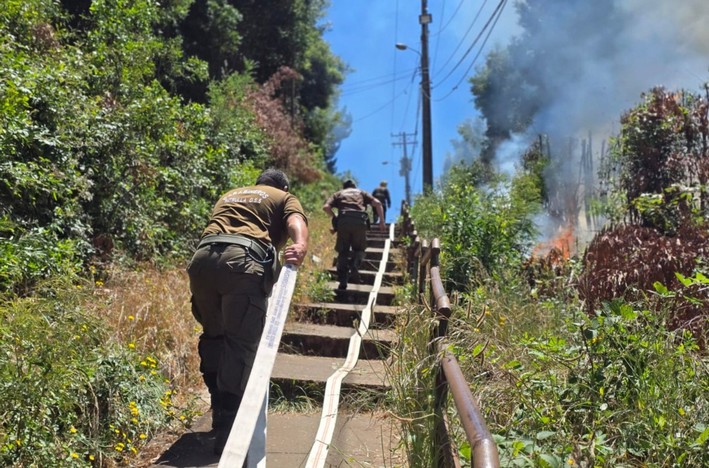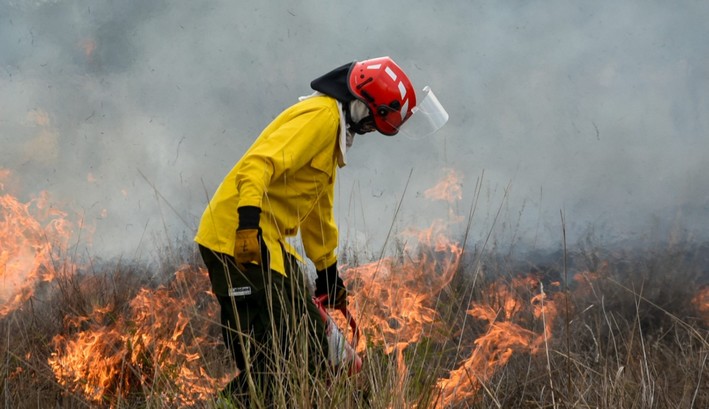Wildfires: Ecological or Criminal Interpretation of Fire
Opinion Column: Julio Torres Cuadros, Executive Secretary of the College of Forest Engineers of Chile
As has been happening every summer season, wildfires spark a debate that tends to be biased depending on the viewpoint of those voicing their opinions. It is striking, for example, the contrast between opinions about a wildfire affecting native forests and those that annually impact other vegetation formations for productive purposes. In the latter, it is common to hear "specialists" blaming the trees for burning, whereas, when it comes to natural forests, they blame the lack of equipment and speed in firefighting. When native forests are involved, the trees are seen as victims, but when it comes to plantation fires, the trees are deemed the culprits.
The recent wildfire in the commune of Timaukel, Magallanes region, which burned 1,300 hectares of native forest and peatlands, debunks a belief entrenched in forest debates: that native forests do not burn or that their ignition is hindered by higher moisture levels. This belief is unfounded, as the origin of fire is almost always human-caused, and the resulting impact depends on external variables unrelated to the fire's origin. In the case of the Timaukel fire, the dominant factor was the intense winds in the area. The false notion that native forests are "immune" to fires should have already been dismissed given the abundant empirical evidence. Native vegetation suffers the impact of fire with regrettable frequency, as seen in the wildfires in Cochrane (2019), Torres del Paine National Park (2005, 2011, and 2015), China Muerta (2015) and Malleco (2002) Reserves, or the Sierras de Bellavista area (1999). These cases clearly establish that native forests also burn, contrary to what is stubbornly claimed by those who argue that replacing plantations with natural forests would reduce wildfire incidence in the country.
In this debate, it is common to propose recommendations aimed at modifying forestry models—shifting from extensive commercial plantations to mosaic systems that integrate plantations, native forests, and grasslands—as a strategy to create "more fire-resilient landscapes." That is, more heterogeneous landscapes, since plantation homogeneity would favor fire spread. These recommendations do not criminalize trees, but they omit other considerations that could explain the difference in incidence and severity between wildfires affecting plantations and those affecting native forests. They overlook, for example, the growing phenomenon of intentionality.
Take the case of the La Araucanía region as an example. Of the 64,000 hectares affected nationwide this season, 35,000 hectares are in this region alone—55% of the total burned area. However, this region accounts for only 20% of the country's plantation area. This is not unique to this season; wildfire prevalence in La Araucanía has been recurring in recent years. In fact, this region has become the most affected in terms of burned area, displacing the Biobío region several years ago as the hardest-hit region.
Should we assume that climate change affects this region more severely?
Not at all. The explanation lies simply in the intentional origin of these fires. In some communes of this region, intentionality reaches 80%, according to data from affected forestry companies and CONAF. Additionally, in recent years, armed attacks against ground firefighting crews, firefighters, and aircraft have increased, often preventing access to properties being intentionally burned.
This situation is ignored or downplayed by those who blame trees or the forestry model for wildfires. For years, we have witnessed a highly active movement stigmatizing forest plantations with introduced species, exploiting drought or wildfires—including intentional ones—to push a "green" agenda, understood as degrowth or dismantling productive forestry activity. They will not call it dismantling, but in practice, they allege such extensive impacts and seek to impose so many regulations that the industry would become unviable. The concentration of fires in plantations is interpreted as clear evidence of the risk posed by these crops, without considering that intentional targeting occurs precisely in plantations, making any comparison with wildfire incidence in native forests misleading.
If intentionality persists or increases, the "resilient landscapes" recommended by specialists—composed of mosaics of different vegetation covers, including native forests—will not be able to stop fire spread. Those who interpret wildfires purely from an ecological perspective should pause to reflect on the criminal aspects that influence their origin and spread, rather than omitting an all-too-obvious factor in the causes of this phenomenon.

















